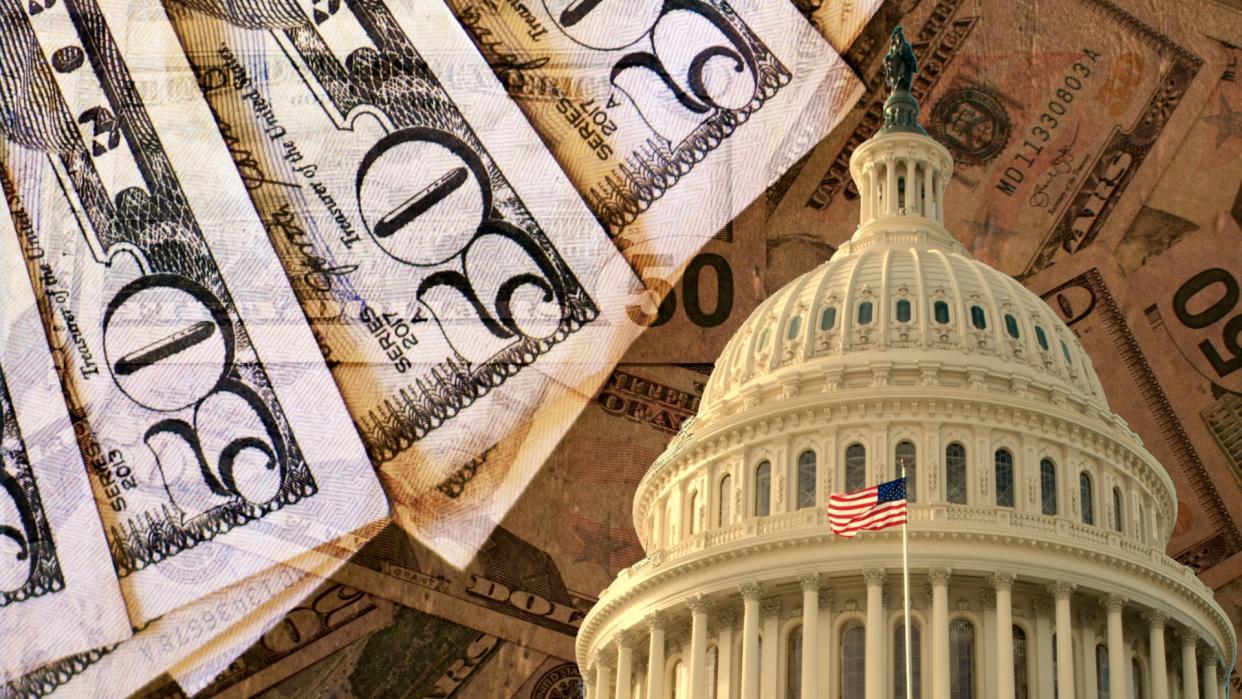The US Government Owes $30 Trillion –That Means You Owe Over $2 Million

Ideally, the US government would match its spending to its revenue, avoiding debt entirely. Just like an individual, though, the government often has to pay for something it cannot afford. Individuals use loans or credit cards to make those purchases. The US government borrows through government securities, paying interest on that debt to investors in the form of interest.
Check Out: Rare Bicentennial Quarter Has Nearly $20K Value — Plus 7 More Worth Big Money
Read Next: How To Get $340 Per Year in Cash Back on Gas and Other Things You Already Buy
When a government has a good record of making timely payments on its debt, its credit rating is top-notch. When a government indicates it might not pay on time — whether due to the necessity of renegotiating debt caps or a failing economy — a nation’s credit rating will take a hit. When this happens, just as is the case for an individual, the cost of borrowing for that government becomes more expensive.
How Does the National Debt Affect You?
As an individual, it matters to you that the US government owes $30 trillion and counting according to the Fox Debt Tracker, because your $2,000,000 share of that debt will cost you in a number of ways.
1. Higher Tax Rates
Think about it: if the government needs additional funds, it can’t just print money to meet that need. It has to raise the money. One way to do that is to raise the tax rate, or close some of the loopholes, so that more revenue comes in at tax time.
2. Cuts to Programs
Another way the government can meet it’s debt obligations is to cut its spending wherever it can. This won’t necessarily decrease the debt, but it will give the government money to pay the interest on the debt, which by the way, is the biggest part of the expense of all that national debt.
3. Delaying Infrastructure Maintenance
The federal government pays a share of the cost of maintaining highways, bridges and tunnels. If they push any maintenance into the future, they avoid spending now, freeing up more money for servicing the national debt. Unfortunately, you travel on that infrastructure every day.
4. Cuts to Education Spending
Schools are funded in a variety of ways at the state and local level, with federal money for some programs as well as student loans for higher education. Cuts to those programs in order to service the debt means fewer opportunities for you and your children.
5. Concern About the Future
Learn More: 8 Rare Coins Worth Millions That Are Highly Coveted by Coin Collectors
Hopefully, you’ve never been in the position of having all of your “extra” money going to pay the interest-only portion of your debt. If you have, you know the sense of futility that goes with feeling like you’ll never get to a better place. Our national economy depends upon an optimistic view of the future. The national debt makes that very difficult.
More From GOBankingRates
I'm a Bank Teller: 9 Reasons You Should Never Ask for $2 Bills From the Bank
5 Reasons You Should Consider an Annuity For Your Retirement Savings
This article originally appeared on GOBankingRates.com: The US Government Owes $30 Trillion –That Means You Owe Over $2 Million
